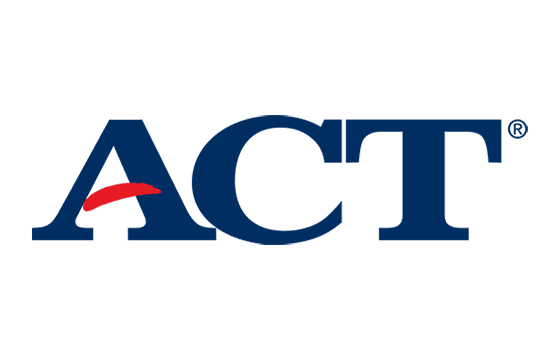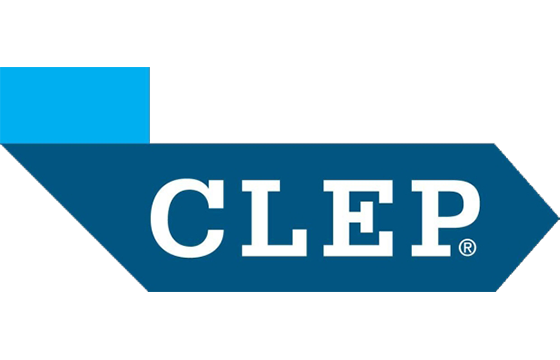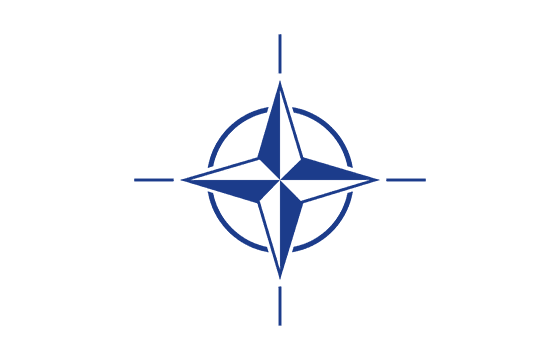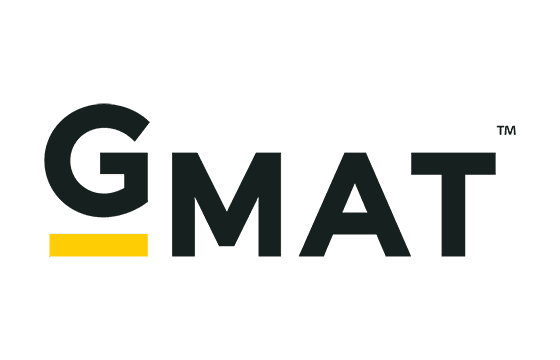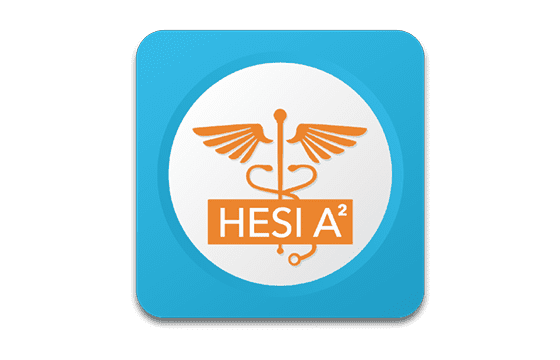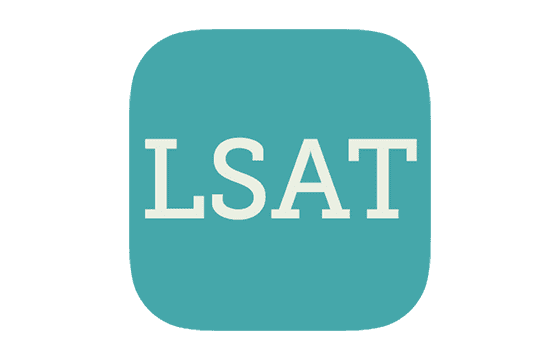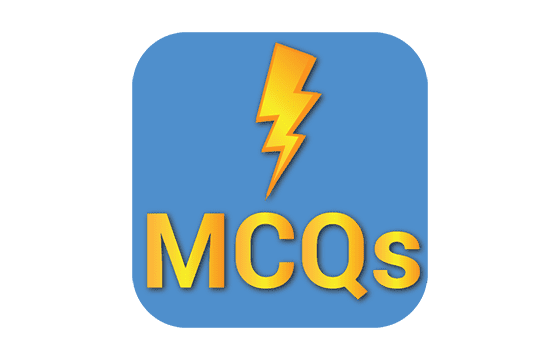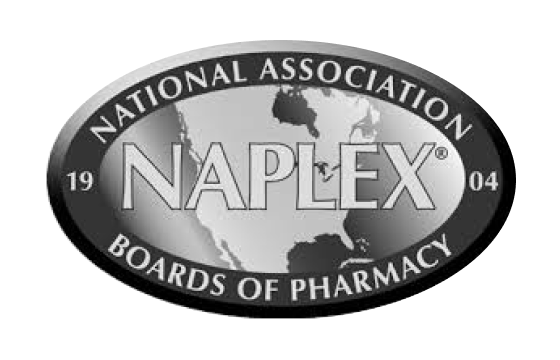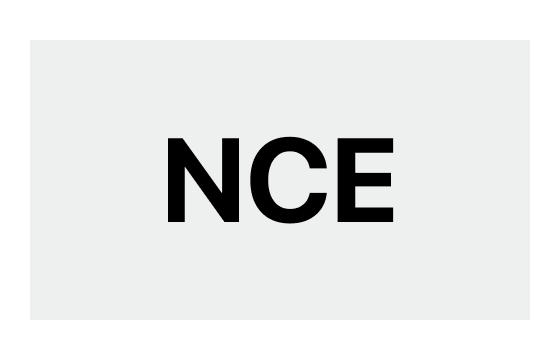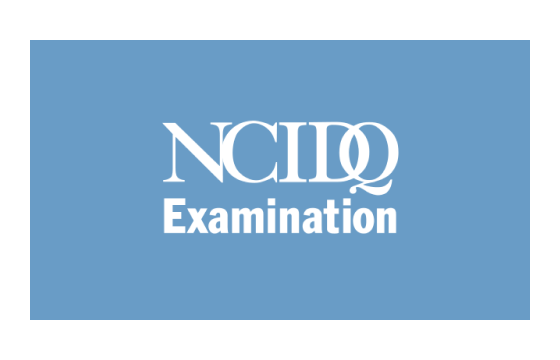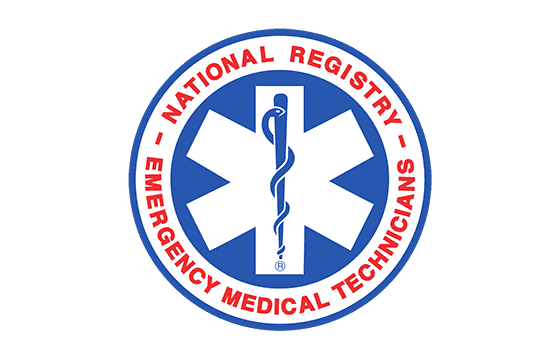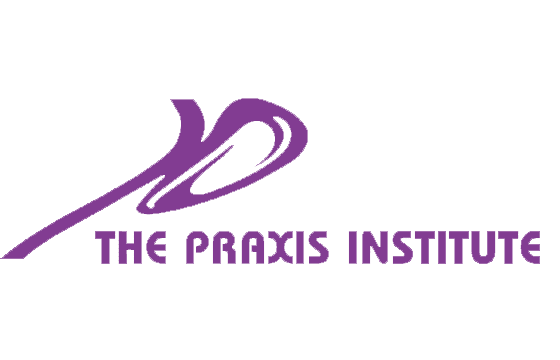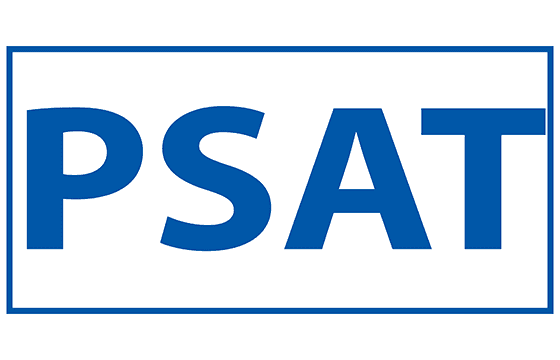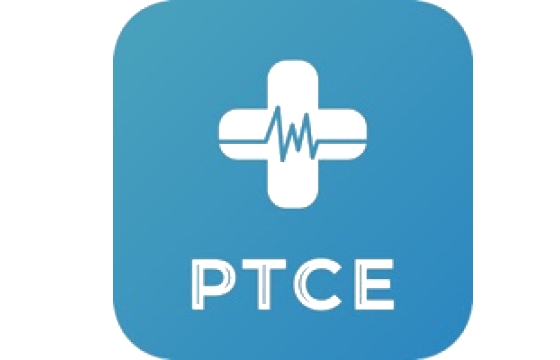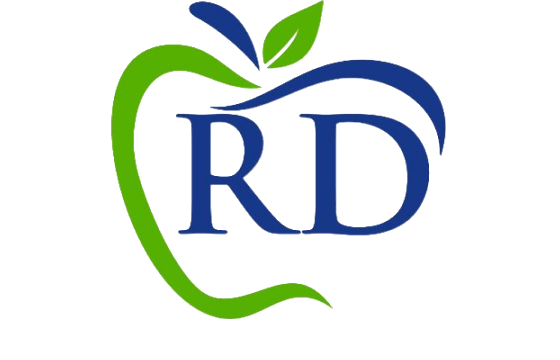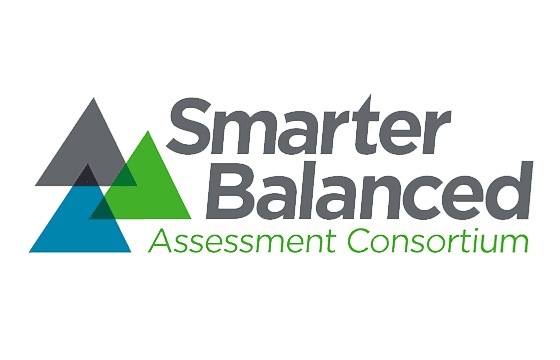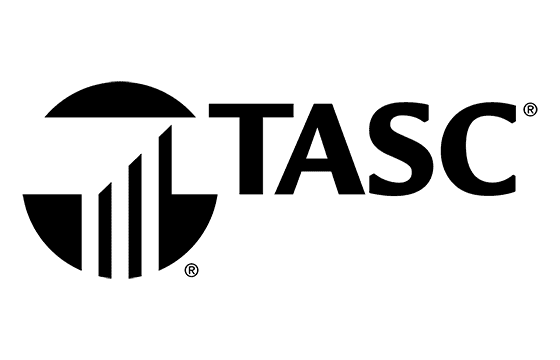Pass Your Test Prep CPT Math Test Easy!
Test Prep CPT Math Test Questions & Answers, Accurate & Verified By IT Experts
Instant Download, Free Fast Updates, 99.6% Pass Rate
Test Prep CPT Math Practice Test Questions, Exam Dumps
Test Prep CPT Math (College Placement Test - Math) exam dumps vce, practice test questions, study guide & video training course to study and pass quickly and easily. Test Prep CPT Math College Placement Test - Math exam dumps & practice test questions and answers. You need avanset vce exam simulator in order to study the Test Prep CPT Math certification exam dumps & Test Prep CPT Math practice test questions in vce format.
Understanding the Foundations of Test Prep CPT Math and Its Academic Significance
The world of standardized testing often reflects a silent negotiation between conceptual clarity and time-bound precision, and nowhere is this more evident than in the mathematical reasoning demanded by CPT Math. Within the vast academic terrain where logical fluency meets structured computation, this domain represents a calibrated blend of arithmetic, algebraic, and data-driven reasoning that assesses not merely what an individual knows but how efficiently they can apply it under intellectual pressure. Over time, institutions have come to treat this segment as a lens through which mathematical readiness and adaptability are measured, especially for learners transitioning toward higher studies or competitive platforms.
Mathematics within this framework serves as more than just a discipline of numbers; it is a language of patterns and structured intuition. Every computation, whether numerical or symbolic, encodes reasoning that mirrors problem-solving in real life. What elevates CPT Math above basic calculation is the demand for adaptive interpretation — the kind that measures how well a candidate can recognize relationships, manipulate symbolic expressions, and extract insights from data presented in condensed formats. This synthesis of logic and intuition forms the backbone of a student’s analytical architecture and forecasts their ability to engage with complex reasoning later in academic or professional spheres.
A defining element of this assessment lies in its subtle complexity. Each question often conceals layers of reasoning — a hidden interplay between concept mastery and cognitive agility. Arithmetic, once considered elementary, transforms into a test of precision and mental computation. Algebra steps forward as an instrument of abstraction, guiding thought from the tangible to the hypothetical. Geometry and data interpretation further stretch cognitive faculties, compelling one to think spatially and statistically. In essence, the test redefines mathematics not as rote memorization but as a dynamic dialogue between the mind and logical reality.
Beyond the surface structure, CPT Math symbolizes the pedagogical shift toward integrated reasoning. Traditional methods of problem-solving are insufficient here; what’s tested is how well a learner can link conceptual islands into a coherent chain of thought. A student trained under a vendor-based system emphasizing foundational clarity learns to approach each mathematical challenge as an opportunity for structured exploration. Such preparation conditions the mind to trace every pattern, question every assumption, and extract conclusions grounded in evidence rather than intuition alone. The correlation between theoretical understanding and procedural execution becomes the key differentiator between mere competence and mastery.
In today’s academic and professional environments, mathematical literacy has evolved beyond its conventional image. CPT Math serves as a gateway to this evolution by fostering quantitative resilience. It’s not merely about recalling formulas but about reconstructing them through logical consistency. Each candidate is expected to demonstrate the ability to simplify expressions, model scenarios algebraically, and manipulate data without losing interpretative depth. This balance of accuracy and adaptability represents the highest form of applied cognition — an ability cultivated through continuous and reflective engagement with mathematical tasks.
The structured difficulty of CPT Math stems from its adaptive methodology. Unlike uniform examinations, it scales its complexity in accordance with the candidate’s demonstrated proficiency, creating an environment that not only measures knowledge but also tests cognitive elasticity. Such design reveals how deeply a learner understands conceptual hierarchies, how they respond to ambiguity, and how efficiently they recalibrate their strategies under pressure. The system recognizes that true understanding lies not in familiarity but in the capacity to adapt seamlessly when patterns shift.
What makes CPT Math uniquely demanding is its insistence on precision without redundancy. A single miscalculated step can shift an entire sequence, highlighting the intricate interdependence of operations. Hence, preparation demands not just content mastery but also the cultivation of a mathematical temperament — a composure that allows one to think linearly and intuitively at once. Those trained under structured academic systems where analytical clarity is prized develop an instinct for these transitions. They learn to perceive problems as layered constructs rather than isolated tasks, a skill that proves invaluable across all quantitative disciplines.
This deep connection between mathematical reasoning and structured learning systems explains why CPT Math remains integral in academic evaluation frameworks. It encapsulates the ethos of applied education — where knowledge becomes functional, and comprehension evolves into strategy. In this light, mathematics ceases to be an abstract pursuit; it becomes a living skill, capable of transforming data into decisions and equations into foresight. The ability to transpose numerical representation into conceptual understanding is precisely what educators seek to assess when they emphasize this component.
The test’s format also encourages reflection on cognitive diversity. Not every learner approaches a mathematical challenge through the same lens. Some rely heavily on visual reasoning, while others depend on algebraic manipulation or intuitive logic. The examination accommodates these variations through its question design, which allows multiple pathways to arrive at the same conclusion. This inclusivity of thought nurtures a more holistic definition of intelligence, one where creativity and accuracy coexist rather than conflict. It is this multidimensional character that makes CPT Math both rigorous and intellectually rewarding.
Equally significant is the role of time management, an often underestimated determinant of success in quantitative reasoning. The constraints imposed by a time-bound test simulate real-world scenarios where decisions must be made under pressure without compromising quality. This alignment between academic testing and cognitive practicality reinforces the test’s relevance beyond the classroom. It prepares learners not only for academic challenges but also for professional contexts where analytical precision and temporal efficiency define outcomes.
Moreover, the system’s alignment with vendor-guided frameworks introduces a structured learning ecosystem where preparation becomes both methodical and reflective. Through systematic engagement with modular concepts — arithmetic progression, linear functions, data synthesis, and more — learners develop a mathematical intuition that transcends memorization. The vendor’s pedagogical framework ensures that concepts are contextualized, making mathematics approachable without diluting its intellectual rigor. This synthesis of clarity and challenge defines the modern approach to quantitative education.
In contemporary education, the convergence of technology and learning has further enhanced CPT Math’s relevance. Digital testing environments, adaptive scoring mechanisms, and interactive question formats have transformed the experience from static evaluation to dynamic engagement. Learners today must not only know mathematics but also demonstrate the agility to interact with it across digital interfaces. This technological mediation adds a new layer to the test’s design — one that examines digital literacy alongside numerical reasoning.
From an educational perspective, CPT Math represents an essential bridge between foundational learning and applied reasoning. It encourages learners to move beyond passive comprehension toward active intellectual engagement. Every equation solved, every data pattern decoded, reflects a microcosm of cognitive evolution. In navigating these challenges, learners discover not only their strengths and weaknesses but also their preferred modes of reasoning — insights that shape their broader academic journeys.
A particularly notable aspect of this mathematical landscape is how it promotes resilience. Failure to solve a problem within the first attempt often leads to reevaluation, restructuring, and renewed focus — qualities indispensable to lifelong learning. The process of iterative improvement inherent in mathematical reasoning mirrors real-world problem-solving cycles. By confronting structured challenges, learners develop perseverance and mental flexibility, attributes that transcend the boundaries of mathematics itself.
As global academic standards evolve, the emphasis on integrated reasoning continues to expand. CPT Math exemplifies this transition, offering a precise model of how educational assessments can balance conceptual depth with evaluative accuracy. It invites both educators and learners to view mathematics not as a subject confined to textbooks but as a living, evolving discipline that shapes how we perceive, interpret, and engage with the world.
Ultimately, CPT Math stands as a testament to the enduring power of quantitative reasoning as a foundation of intellectual growth. Its design challenges the superficial mastery of formulas and compels learners to cultivate authentic comprehension — the kind that endures long after the test is done. By harmonizing logic, intuition, and structured analysis, it ensures that those who engage with it do not merely perform mathematics but internalize its principles as part of their cognitive identity. This deep integration between reasoning and reflection underscores the test’s purpose and the academic vision it upholds — to create thinkers who can navigate complexity with clarity and transform abstract numbers into meaningful understanding.
Cognitive Depth and Analytical Precision in CPT Math Assessment
Mathematical reasoning stands at the heart of every structured evaluation that seeks to measure intellectual maturity. Within the complex architecture of academic testing, CPT Math embodies this philosophy through its precise blend of conceptual knowledge and cognitive flexibility. The assessment does not merely quantify mathematical skill; it unearths how deeply a learner internalizes logic, abstraction, and adaptability. It represents an intricate equilibrium between comprehension and execution, between understanding a problem and constructing its solution in real time. The essence of this test lies not in routine computation but in the mind’s ability to navigate structured uncertainty with confidence.
Every mathematical domain tested within this framework—whether arithmetic reasoning, algebraic manipulation, or data synthesis—demands not only procedural fluency but also metacognitive awareness. Candidates are expected to interpret, analyze, and infer beyond the surface of numbers. The questions are designed to mirror real-life complexities, where mathematical decisions unfold through contextual understanding. What distinguishes this test from typical mathematical exercises is its emphasis on transferable reasoning. The goal is to ensure that the examinee is not simply applying formulas but interpreting patterns and constructing meaning through logic-driven insight.
Arithmetic, though often regarded as an introductory field, becomes a formidable cognitive exercise under this system. The test’s numerical reasoning sections often revolve around ratio interpretation, percentage transformations, number sequences, and approximation analysis. These are not meant to test memorization but intuitive adaptability—how one recognizes quantitative relationships and applies appropriate shortcuts without compromising accuracy. It cultivates a habit of mental calculation that aligns with efficiency and precision. Each number becomes an entity that interacts dynamically with others, reflecting how the human brain organizes quantitative perception.
Algebra forms the backbone of higher-order reasoning within this domain. Beyond manipulating equations, it demands symbolic literacy—the ability to treat variables as conceptual entities that embody unknown relationships. The test requires the candidate to identify patterns, restructure expressions, and simplify complexities while maintaining logical coherence. This process encapsulates a vital mental skill: abstraction. The ability to transition from concrete arithmetic examples to algebraic generalizations signifies the learner’s readiness to operate in conceptual dimensions, a hallmark of cognitive advancement. It is not just about solving for x; it is about understanding why x exists and how its relationship defines mathematical structure.
Data interpretation represents another transformative aspect of this assessment. Through graphs, tables, and charts, the candidate must convert visual information into numerical reasoning. Each dataset contains embedded narratives—trends, outliers, and hidden correlations—that the mind must decode under temporal constraints. This process sharpens analytical sensitivity and fosters an appreciation for evidence-based reasoning. In many ways, this mirrors the broader academic and professional demand for data literacy, where decisions depend on one’s ability to interpret and synthesize information. CPT Math thus becomes a rehearsal for real-world reasoning, emphasizing how quantitative logic underpins empirical understanding.
Geometry, though seemingly distant from abstract algebra, contributes uniquely to the test’s multidimensional structure. Its inclusion ensures that spatial reasoning complements numerical fluency. Candidates are invited to visualize relationships, manipulate shapes mentally, and infer properties through deduction. The cognitive interplay between visualization and computation enhances spatial intelligence—a skill not only critical in technical disciplines but also in creative problem-solving. Through geometric analysis, learners refine their intuition about symmetry, proportion, and structure, grounding mathematical reasoning in perceptual awareness.
An often-overlooked dimension of CPT Math is its silent evaluation of logical sequencing. Each section subtly examines how the learner organizes thought, how efficiently they transition from one step to the next without hesitation or redundancy. This sequencing ability forms the foundation of procedural intelligence—the mind’s capacity to follow a structured pathway toward a precise outcome. In the absence of this logical fluency, even well-prepared candidates may falter under timed conditions. Therefore, this test not only measures mathematical proficiency but also cognitive architecture—the mental blueprint of how reasoning unfolds in real time.
The vendor-aligned preparation methodologies that guide learners toward success in CPT Math emphasize reflective learning. This is not about repetitive practice but about cultivating mental discipline. Learners are encouraged to approach each topic through cycles of comprehension, application, and evaluation. This recursive learning structure develops cognitive endurance—a trait indispensable for sustained performance under pressure. Such systems integrate modular learning strategies that progressively elevate conceptual understanding while reinforcing problem-solving confidence.
Time management remains a defining factor within the CPT Math ecosystem. The finite duration of the test imposes a cognitive compression that mirrors real-world constraints. The learner must balance accuracy and speed, ensuring neither dominates at the expense of the other. Strategic pacing becomes a skill in itself—an interplay between instinct and control. With every passing minute, the candidate must gauge whether to persist on a challenging question or transition to one that yields quicker resolution. This psychological negotiation between ambition and pragmatism epitomizes mathematical maturity.
Perhaps one of the most remarkable aspects of CPT Math lies in its subtle demand for emotional intelligence. Mathematics, often portrayed as purely rational, in truth requires emotional regulation under cognitive load. Anxiety, impatience, or overconfidence can distort reasoning just as much as conceptual gaps. The test, therefore, becomes an unspoken evaluation of self-management—the ability to remain composed amid intellectual tension. Students who prepare under structured pedagogical systems gradually develop this equilibrium through exposure to simulated assessments that mirror the intensity of the actual test environment.
In its structural design, the assessment represents an evolving pedagogical philosophy. It embodies the movement from passive reception of knowledge toward active construction of meaning. The questions are crafted not to trick but to provoke deeper reasoning. Each task requires a candidate to engage critically with the content, reexamine assumptions, and reconstruct their understanding in the face of new information. This intellectual elasticity is the essence of higher education and a core competency for any analytical profession. It ensures that learners transcend rote learning and enter the realm of cognitive synthesis.
Preparation for CPT Math, therefore, must not be seen as an act of memorization but as an intellectual cultivation. Vendor-guided systems of learning typically prioritize conceptual anchoring over superficial familiarity. They emphasize clarity of thought, pattern recognition, and structural problem-solving. Under such methodologies, students evolve into independent thinkers who can navigate mathematical landscapes with poise and precision. The pedagogical alignment between vendor-based guidance and CPT Math’s structure forms a synergy that empowers learners to achieve mastery through understanding rather than repetition.
A striking feature of this assessment model is its ability to reveal hidden layers of intellectual potential. Many students discover during preparation that their difficulties lie not in comprehension but in strategy. The test’s adaptive nature exposes inefficiencies in problem-solving approaches, prompting learners to recalibrate their techniques. Over time, this process refines their mental frameworks, allowing for deeper insight and more efficient execution. The test thus becomes both a diagnostic and developmental instrument, shaping rather than merely measuring mathematical ability.
The long-term benefits of mastering CPT Math extend far beyond academic metrics. It trains the mind to think structurally—to decompose complex situations into manageable components and reconstruct them into coherent solutions. This structural intelligence has universal application across fields as diverse as finance, engineering, and cognitive science. Individuals who cultivate such reasoning frameworks gain the ability to analyze uncertainty, predict outcomes, and design solutions grounded in logic and evidence. Mathematics here becomes a metaphor for rational thought—a universal language through which clarity emerges from complexity.
Another intellectual virtue that CPT Math fosters is intellectual humility. Encountering problems that resist immediate resolution compels learners to acknowledge limitations and persist through analytical exploration. This humility nurtures resilience—the willingness to engage with difficulty without surrender. The test thus shapes not only academic aptitude but also character, cultivating patience, focus, and adaptability. In a broader sense, this prepares learners for lifelong learning, where growth depends on the ability to confront and decode new challenges continuously.
The digital evolution of assessment has further transformed the CPT Math experience. Online delivery systems enable adaptive scoring, real-time analysis, and data-driven feedback. These technological integrations allow for a more personalized evaluation of a candidate’s strengths and weaknesses. They ensure that preparation becomes strategic rather than mechanical, allowing learners to focus on specific areas that require reinforcement. The fusion of technology and pedagogy underlines the modern academic commitment to intelligent assessment—where evaluation itself becomes a form of guided learning.
Equally profound is the role of pattern recognition in determining success. Beyond formulas and computations lies the human ability to perceive order amidst apparent randomness. CPT Math leverages this faculty by embedding subtle regularities within question sets, inviting candidates to identify these underlying symmetries. Recognizing such patterns transforms mathematics from a mechanical exercise into an act of discovery. It aligns intellectual curiosity with analytical discipline, reinforcing the joy of problem-solving as an intrinsically rewarding process.
The precision demanded by the test mirrors the precision required in analytical professions. Every calculation, every inference, must be both valid and justifiable. This insistence on logical accountability teaches learners that accuracy is not a luxury but a discipline. It molds individuals who respect the integrity of reasoning—a quality essential in an era where information is abundant but clarity is scarce. Mathematical discipline thus becomes a microcosm of ethical thought: to think truthfully, to reason responsibly, and to act with intellectual integrity.
Through this lens, CPT Math emerges not just as an academic challenge but as a transformative intellectual experience. It harmonizes the abstract elegance of mathematics with the concrete demands of reasoning. Each correct answer signifies more than mastery of a topic—it represents the alignment of logic, focus, and adaptability. The test, therefore, functions as both a mirror and a catalyst of intellectual evolution, shaping learners into thinkers who can navigate the uncertainties of a data-driven world with clarity and confidence.
Quantitative Reasoning and Structural Intelligence in CPT Math Frameworks
Quantitative reasoning serves as the intellectual compass within CPT Math, guiding learners through a labyrinth of numbers, symbols, and logical relationships that test not only mathematical proficiency but also conceptual clarity. The framework encapsulates how thought evolves when abstract concepts are transformed into measurable reasoning, reflecting the human mind’s inherent ability to systematize the world through mathematics. The challenge presented by this evaluation lies not in its difficulty alone but in its demand for structural thinking — the capacity to navigate complexity with organized precision. Through this lens, CPT Math emerges as an intellectual ecosystem where cognition, discipline, and intuition converge.
At its core, quantitative reasoning extends beyond numeric manipulation; it embodies the mental art of structuring thought through evidence and proportion. Every problem embedded within CPT Math mirrors a deeper cognitive demand — to discern patterns, assess relationships, and predict outcomes with minimal error. This is not simply a test of computation; it is a measurement of reasoning fluency. The architecture of questions is designed to provoke an analytical dialogue between the candidate and the data presented, compelling one to engage in layered reflection rather than linear execution. This structure transforms mathematical engagement into an act of intellectual craftsmanship.
Arithmetic reasoning forms the foundation of this quantitative journey. While numbers are universal, their interpretation depends heavily on context and relational awareness. The test challenges the learner to visualize numerical interdependencies — how ratios shift when parameters change, how percentages can alter meaning, and how estimations must balance precision with practicality. Every calculation in this domain echoes a real-world decision-making scenario where quantitative evaluation underpins outcomes. It teaches that mathematics is not confined to symbols but exists as a living framework through which one comprehends variability, efficiency, and proportional logic.
The essence of CPT Math also resides in algebraic abstraction. Here, equations evolve into linguistic expressions of logic. They translate relationships between unknowns into structured statements that the mind must decode. Through algebra, the test measures not only one’s ability to perform symbolic transformations but also the power of representation — the skill of simplifying complexity without losing conceptual fidelity. This faculty extends far beyond academics, influencing how individuals model problems, identify dependencies, and predict outcomes in varied contexts. Algebra, in this sense, becomes a mirror of thought itself — structured, sequential, and deeply analytical.
The test’s data interpretation component bridges numerical reasoning and visual cognition. It presents charts, graphs, and tabulated datasets not as static entities but as dynamic sources of inference. The candidate must learn to convert visual density into structured logic, drawing insights that transcend superficial observation. This analytical conversion reflects the essence of modern reasoning — to distill meaning from complexity through structured thought. The act of interpreting data becomes a lesson in intellectual economy, where the mind learns to extract maximum significance with minimal distraction. Each data-driven question reinforces a vital academic discipline: the ability to think both quantitatively and contextually at once.
Geometry, though often underestimated, introduces a spatial dimension to mathematical reasoning. Within CPT Math, it embodies the capacity to perceive structure through space, to translate the intangible into measurable form. This portion of the test nurtures the learner’s ability to visualize transformations, deduce properties, and reason deductively through spatial logic. Beyond the academic realm, geometric reasoning sharpens perceptual precision, an essential quality in disciplines requiring visual analysis or structural awareness. Geometry thus functions as a cognitive bridge connecting the abstract world of numbers to the tangible realm of perception.
The cognitive structure of CPT Math emphasizes what can be termed “structural intelligence.” This form of intelligence involves recognizing hierarchies within information, organizing them logically, and executing decisions that maintain coherence across variables. Every question is a microcosm of structural reasoning — how the brain categorizes complexity into manageable frameworks. This ability distinguishes those who can solve problems from those who understand systems. The learner becomes not just a calculator but a constructor of logic, capable of weaving abstract and concrete reasoning into unified cognitive processes.
Vendor-based pedagogical systems that align with CPT Math are particularly effective in cultivating this structural intelligence. They provide a methodical path through mathematical concepts, ensuring that comprehension precedes application. Rather than relying on rote practice, such systems instill reflective reasoning, where each solution is understood, not memorized. This progression builds intellectual stamina and fosters deep learning, preparing candidates to confront novel problems with adaptability and confidence. Within these frameworks, preparation transforms from mechanical repetition into cognitive evolution.
A critical dimension of the CPT Math design lies in its time constraints, which simulate conditions of real-world cognitive demand. Each minute becomes a prioritization exercise — the art of distinguishing essential information from peripheral data. Learners are compelled to manage both thought and time with strategic balance. This dual challenge reinforces executive control, sharpening attention and cognitive agility. The ability to maintain logical consistency under time pressure represents one of the highest forms of disciplined thought. It transforms the test from a mere academic exercise into an authentic simulation of analytical decision-making.
Perhaps the most profound aspect of CPT Math lies in how it integrates emotional stability with logical reasoning. Mathematics is frequently mischaracterized as emotionless, yet the ability to remain composed under cognitive strain directly influences reasoning accuracy. A calm mind perceives structure; an anxious one perceives chaos. Thus, success in this examination is not solely a function of preparation but of emotional regulation. Vendor-guided preparation programs often address this through consistent practice environments, familiarizing learners with the rhythm and intensity of real assessment conditions. Over time, such exposure builds cognitive resilience — the ability to think clearly amid pressure.
The progression of mathematical difficulty within the test mirrors cognitive development itself. Simpler questions assess foundational comprehension, while advanced items probe analytical synthesis. The transition between these levels demands flexible thinking — the ability to reconfigure mental frameworks without losing continuity. This adaptive reasoning ability is a cornerstone of modern education. It ensures that learners evolve beyond fixed methodologies, embracing innovation in thought. Each adaptive challenge in CPT Math becomes a rehearsal for real-world complexity, where unfamiliar problems require both intellect and imagination.
An integral aspect of this framework is its diagnostic precision. CPT Math identifies not only what a learner knows but also how they think. By analyzing patterns of error, the system reveals gaps in reasoning that traditional assessments often overlook. These insights enable educators to tailor learning pathways that target specific weaknesses. Such diagnostic clarity ensures that preparation becomes efficient, focused, and individualized. Within vendor-supported academic systems, this feedback loop becomes a cornerstone of pedagogical refinement — transforming assessment into continuous learning.
The adaptive nature of the test underscores its sophistication. By adjusting the difficulty based on performance, it personalizes evaluation, aligning the challenge with the learner’s evolving competence. This not only enhances engagement but also ensures fairness by preventing disproportionate difficulty. The result is an assessment that captures true mathematical ability rather than performance anxiety or randomness. The candidate’s journey through the test becomes a dialogue of growth, where every correct response unlocks deeper reasoning and every error signals a pathway for refinement.
From a broader educational perspective, CPT Math reinforces the shift toward integrated reasoning. It reflects a global educational philosophy that values analytical versatility over mechanical accuracy. In an age dominated by information and computation, true intelligence lies not in knowing but in understanding connections. The test embodies this by interlinking numerical, spatial, and logical domains within a single evaluative model. This interconnection prepares learners for interdisciplinary challenges, where mathematics functions as a universal grammar for problem-solving across diverse fields.
Quantitative reasoning also cultivates intellectual independence. Each question within the test demands autonomous decision-making. There are no shortcuts, no external cues, only the internal logic of the learner’s mind. This self-reliant reasoning cultivates confidence — not the superficial confidence of memorization but the grounded assurance of comprehension. Learners who train through structured vendor programs gradually internalize this autonomy, developing the courage to trust their logic even when confronted with uncertainty. This confidence, once acquired, extends far beyond mathematics into all domains of analytical inquiry.
CPT Math, in its deeper essence, embodies the harmony between logic and intuition. While the surface of mathematical reasoning appears systematic, its roots often emerge from intuitive insight — the sudden recognition of pattern, proportion, or symmetry. The test invites this synthesis of the rational and intuitive mind, allowing creativity to coalesce with precision. This synthesis defines intellectual maturity: the ability to reason methodically while remaining open to insight. Through its design, the test cultivates thinkers who can balance analytical rigor with imaginative flexibility.
Equally vital is the philosophical dimension that underlies this examination. Mathematics, as explored through this test, represents the pursuit of order amidst uncertainty. Each problem challenges the learner to find coherence within apparent chaos — to transform confusion into clarity through reasoning. This pursuit mirrors the essence of learning itself: a continuous search for understanding in a complex world. CPT Math thus transcends its identity as an academic test; it becomes an allegory of the human intellect striving for structure, meaning, and precision.
The educational philosophy surrounding CPT Math reinforces the importance of incremental mastery. Conceptual learning must precede procedural fluency. Only when understanding is internalized can efficiency emerge naturally. Vendor-aligned preparation models reflect this principle through sequential learning stages that prioritize comprehension. Each level deepens the learner’s conceptual foundation, ensuring that speed never sacrifices understanding. This pedagogical balance between comprehension and execution defines the very spirit of mathematical education in modern assessment systems.
Ultimately, quantitative reasoning as measured through CPT Math serves as both a challenge and an invitation — a challenge to think beyond comfort zones, and an invitation to explore the architecture of logic that governs all rational inquiry. Through systematic engagement with its frameworks, learners cultivate not only mathematical skill but cognitive wisdom — the ability to discern, decide, and deliberate with clarity. The test stands as a living testament to the enduring value of structured thought in an increasingly complex world. It is not merely a gatekeeper of academic advancement but a cultivator of disciplined intellects capable of transforming abstraction into actionable understanding.
Analytical Fluency and Conceptual Integration in CPT Math Evaluation
Within the realm of academic assessment, CPT Math emerges as a compelling demonstration of analytical balance — where precision meets perception, and logical rigor harmonizes with conceptual understanding. The framework underpinning this evaluation transcends the simplistic view of mathematics as a mere collection of numbers or formulaic routines. Instead, it reveals the subject as a multidimensional discipline that intertwines reasoning, abstraction, and structured cognition. The goal is not just to measure mathematical competence but to illuminate the mental architecture that supports reasoning itself. Through this lens, CPT Math becomes a reflection of how thought, method, and structure can coalesce into a seamless expression of intellectual clarity.
Analytical fluency, as cultivated through this framework, represents the intellectual agility required to maneuver through quantitative challenges with precision and poise. It is the ability to transition effortlessly between conceptual comprehension and procedural execution. This fluency is developed through exposure to problems that compel the learner to think dynamically, adapt strategies, and evaluate outcomes under temporal pressure. Each question demands a dialogue between understanding and execution, a mental choreography where every movement must be both deliberate and efficient. The resulting synthesis transforms mathematical reasoning into a living process of cognitive orchestration.
A distinctive element of CPT Math lies in its layered complexity. The test does not simply evaluate whether an answer is correct but examines how it is derived. Behind every numerical outcome lies a network of interdependent ideas — assumptions, transformations, and logical deductions that must cohere seamlessly. This interconnectivity defines the essence of higher-order reasoning. Learners who engage deeply with the test’s structure discover that mathematics here operates as a language of logic, capable of expressing relationships, predicting outcomes, and articulating abstract truths through symbolic precision. Every equation thus becomes a sentence in this intellectual language, composed with intent and clarity.
The role of conceptual integration cannot be overstated. Unlike isolated academic subjects, CPT Math embodies an interdisciplinary spirit that connects numerical reasoning with linguistic precision, visual analysis, and even psychological resilience. This integration reflects a holistic model of intelligence, one that recognizes how different cognitive domains converge to create complete understanding. A well-designed problem within the test often requires the synthesis of multiple competencies — spatial awareness from geometry, symbolic manipulation from algebra, inferential logic from data interpretation, and time-sensitive decision-making drawn from practical reasoning. Together, these dimensions create a learning experience that mirrors the complexity of real-world analytical thought.
Arithmetic, the foundation of mathematical literacy, assumes a new dimension under this framework. What appears simple on the surface becomes a profound exploration of quantitative logic when tested under constrained conditions. Candidates must manage accuracy, estimation, and strategic approximation simultaneously. The mental agility required to process arithmetic relationships swiftly and correctly demonstrates cognitive harmony between calculation and intuition. This layer of CPT Math serves as a diagnostic lens, revealing the balance between automatic recall and reflective reasoning — between speed and depth.
Algebra, on the other hand, represents the structural skeleton of analytical thinking. Its symbolic nature allows learners to navigate abstract spaces of logic, constructing and deconstructing relationships that exist beyond tangible numbers. In CPT Math, algebraic reasoning is not confined to solving for unknowns; it involves pattern recognition, expression manipulation, and structural inference. This process embodies a universal principle of learning: to perceive patterns where others see only data. The learner who masters this art acquires a mental toolkit capable of interpreting systems — mathematical, mechanical, or conceptual — with clarity and coherence.
Geometry introduces yet another cognitive dimension, enriching the learner’s analytical repertoire with spatial reasoning. Within CPT Math, geometry is not merely a visual exercise but a test of deductive precision. The candidate must translate visual relationships into logical propositions, then manipulate those propositions through reasoning. This dual process — visualizing and deducing — strengthens the mind’s capacity to move between perception and abstraction. It cultivates what psychologists term “dual coding,” where visual and verbal reasoning operate in tandem, creating stronger cognitive retention and analytical fluidity.
Data interpretation, an essential component of the test, bridges numerical reasoning with empirical understanding. Here, the learner must extract meaning from graphical or tabular information, discerning relationships that are not explicitly stated. This analytical skill aligns closely with real-world decision-making, where data often presents ambiguity rather than clarity. The ability to infer, estimate, and validate conclusions under these conditions marks the maturity of quantitative literacy. In this sense, CPT Math acts not only as an academic test but as a rehearsal for professional analytical reasoning, where decisions must emerge from patterns rather than prescriptions.
An important aspect of CPT Math’s design lies in its evaluation of problem-solving strategies. Success is rarely determined by the mechanical application of formulas. Instead, it depends on the candidate’s ability to select, adapt, and sometimes even invent methods suited to specific challenges. This strategic adaptability distinguishes the test from traditional examinations that reward memorization. It transforms problem-solving into an act of creativity — guided by logic, yet unbound by rigidity. Learners trained under vendor-based pedagogical systems are particularly adept at this form of adaptive reasoning, as such programs emphasize understanding the “why” behind every “how.”
The cognitive demands of CPT Math also illuminate the concept of mental economy — the efficient use of cognitive resources under constraints. Each question, time-bound and layered, requires the learner to optimize thought processes. Decisions must be made about which paths to pursue and which to abandon. This selective focus cultivates executive function — the brain’s ability to regulate attention, manage working memory, and coordinate decision-making. Over time, repeated exposure to such structured challenges strengthens cognitive control, a skill that translates seamlessly into other academic and professional domains.
Equally integral to the CPT Math experience is its silent cultivation of intellectual resilience. Mathematics, by nature, confronts learners with uncertainty. Incorrect answers and incomplete understandings are inevitable. The test’s format forces students to engage with failure constructively, to reframe mistakes as opportunities for pattern recognition and correction. This process nurtures a growth-oriented mindset, transforming frustration into curiosity. Learners who approach the test with persistence rather than perfectionism develop an enduring intellectual discipline — one that extends far beyond the realm of numbers.
The philosophical foundation of CPT Math rests upon the balance between structure and freedom. While mathematical laws provide rigid frameworks, problem-solving often demands flexibility and innovation. This tension mirrors the nature of human thought, where creativity and order coexist. The learner who masters CPT Math embodies this equilibrium: methodical in approach yet open to novel insights. Such duality defines analytical maturity — the ability to follow logical structure while retaining the courage to think differently when logic alone seems insufficient.
From a pedagogical perspective, vendor-aligned preparation systems offer learners a structured approach to building this balance. These systems emphasize progressive learning cycles — introduction, exploration, application, and reflection. Through this scaffolded methodology, learners internalize each mathematical concept deeply before advancing to the next. This cumulative process mirrors the layered complexity of the CPT Math itself, ensuring that preparation aligns naturally with evaluation. Rather than fragmenting knowledge, it encourages holistic understanding, where each concept reinforces the next in an ascending chain of mastery.
Time management, though often seen as a logistical skill, assumes a deeper psychological role within this testing environment. The temporal pressure simulates decision-making in real-world contexts where speed and accuracy must coexist. It pushes learners to develop instinctive reasoning — the ability to make quick yet rational judgments without succumbing to haste. Such instincts are not innate but cultivated through disciplined practice. Vendor-guided systems integrate timed exercises that train this responsiveness, ensuring that performance under examination conditions mirrors authentic capability rather than chance.
CPT Math also represents the evolution of assessment in the digital age. Modern testing environments increasingly rely on adaptive algorithms that personalize question sequences based on performance. This not only enhances fairness but deepens the diagnostic power of the test. By responding dynamically to the learner’s skill level, the system creates an authentic measure of ability — one that reflects both potential and achievement. In this adaptive space, mathematics becomes a living dialogue between human intellect and technological precision.
In the broader educational ecosystem, the presence of CPT Math underscores the enduring importance of quantitative literacy in an age of automation. While technology can compute, it cannot comprehend; it can calculate, but not reason. The human ability to interpret, contextualize, and apply numerical information remains irreplaceable. This is the essence of what CPT Math seeks to preserve and measure — not computational speed, but the capacity to think mathematically in a world saturated with data. By mastering these skills, learners position themselves not merely as consumers of technology but as interpreters of information.
The true value of CPT Math lies in its transformative potential. It invites learners to see mathematics not as an obstacle but as an instrument of intellectual empowerment. The journey through its structured challenges fosters clarity, patience, and resilience — qualities that extend far beyond examination halls. Those who engage deeply with its demands emerge not only better problem-solvers but more reflective thinkers, capable of approaching complexity with calm and confidence. In this sense, the test functions as both a measure and a mentor, guiding learners toward cognitive self-awareness and disciplined thought.
At its highest level, CPT Math symbolizes the art of reasoning itself. Every question, every calculation, is a reflection of how the human mind seeks coherence amidst complexity. It teaches that precision is not the absence of error but the pursuit of balance — between logic and creativity, structure and adaptability, understanding and execution. This pursuit is what makes mathematics, and by extension, this assessment, a timeless intellectual endeavor. It invites learners to transcend mechanical learning and embrace the elegance of structured thought — the capacity to find order in the infinite dance of numbers and ideas.
Understanding Mathematical Structures in the CPT Framework
Mathematical structures form the foundation upon which logical reasoning, quantitative analysis, and problem-solving rest within the CPT framework. They act as the unseen architecture guiding every calculation, every theorem, and every pattern that defines mathematical cognition. Within this intricate web, one finds relationships that transcend arithmetic and geometry, extending into abstract reasoning, conceptual flexibility, and analytical endurance—qualities essential for navigating complex quantitative assessments.
At its heart, mathematical structure in CPT Math represents a logical design that ensures predictability and coherence in numerical interpretation. The human mind seeks structure; it identifies sequences, detects proportions, and perceives symmetry. The CPT framework capitalizes on this cognitive trait by embedding mathematical structure across its assessment dimensions. Each question is not merely an isolated test item but a node in a carefully orchestrated system designed to gauge conceptual retention, spatial understanding, and deductive fluency.
Understanding mathematical structures begins with pattern recognition. Patterns are the DNA of mathematics; they encode the regularities that give meaning to numbers and shapes. In CPT Math, patterns appear in sequences, ratios, algebraic progressions, and geometric alignments. The examinee’s ability to discern these relationships reflects not just computational skill but also the depth of cognitive organization. Recognizing a hidden relationship in a series or visual arrangement demonstrates awareness of mathematical architecture—one that transcends procedural calculation.
Equally vital is the principle of relational consistency. Mathematical structures thrive on balance and proportionality, and the CPT framework reflects this through comparative reasoning tasks. Candidates encounter equations where variables exist in interconnected harmony, geometric configurations where lengths and angles sustain a delicate equilibrium, and statistical representations where central tendencies echo proportional fairness. This structural symmetry reflects the very essence of mathematical thinking—a discipline rooted in equilibrium and coherence.
In exploring algebraic and geometric structures, one recognizes that CPT Math doesn’t merely test formulas but evaluates how effectively candidates can manipulate relationships. Algebra represents abstraction at its finest, transforming numbers into symbols and enabling generalization. Within the CPT structure, algebraic reasoning is not confined to solving for an unknown but to interpreting the logic behind equivalence and transformation. Each equation becomes a linguistic construct where terms communicate through balance, substitution, and simplification. Those who master this structural dialogue find themselves not solving but conversing with mathematics.
Geometry, on the other hand, embodies visual structure. Its forms and symmetries appeal to spatial intuition and perceptual order. Within the CPT framework, geometric tasks assess how one perceives boundaries, measures distance, and identifies congruence within irregular contexts. This dimension of structure challenges the mind to merge the visual with the logical, transforming lines and curves into arguments of space and proportion. The capacity to visualize transformations—rotations, reflections, and dilations—reflects adaptability and cognitive flexibility, essential traits for thriving in mathematical reasoning.
Beyond these traditional constructs lies the abstract realm of mathematical logic and set theory—where structure becomes conceptual rather than numerical. Here, CPT Math touches the philosophical dimension of mathematics, assessing one’s ability to categorize, infer, and deduce from limited premises. Sets and subsets mirror the way the human brain organizes information, establishing inclusion and exclusion principles that mirror logic itself. Every comparison, every analytical decision within CPT draws from these mental frameworks, even if implicitly.
Structure also governs how one approaches problem-solving strategies. Candidates who internalize mathematical frameworks understand that every problem possesses an underlying skeleton—a pattern that guides its resolution. Identifying this skeletal structure transforms a complex question into a predictable system of relations. Instead of trial and error, reasoning becomes architectural. Each step builds upon the last, ensuring coherence until the final deduction emerges naturally.
CPT Math subtly encourages structural awareness through layered question design. Problems are rarely straightforward; they are sequences in disguise, leading from recognition to manipulation to synthesis. This cascading format mirrors real-world reasoning, where decisions depend on prior evaluations and where logic unfolds progressively. The assessment thus becomes an allegory for disciplined thought—structured yet flexible, logical yet intuitive.
Structure, however, is not static. Mathematics evolves through dynamic interaction between established systems and innovative extensions. CPT reflects this by challenging test-takers to adapt structures, test limits, and recognize when conventional rules can be bent for higher insight. A simple algebraic transformation might lead to a novel symmetry; a geometric interpretation may redefine how a ratio behaves. Such creative reinterpretations reveal the candidate’s ability to not only apply but to expand mathematical structures—a hallmark of genuine understanding.
The integration of statistics into the structural framework further broadens CPT’s mathematical architecture. Data interpretation represents structure in motion—a numerical ecosystem where patterns, averages, and deviations coexist. The test probes whether the examinee can discern order within variability, predict tendencies from distributions, and maintain logical consistency while processing uncertainty. Statistical reasoning thus becomes the modern expression of mathematical structure, blending analytical precision with probabilistic foresight.
Structure also plays a crucial role in time management and problem sequencing during the exam. Recognizing the structure of question types allows examinees to prioritize efficiently. Familiar formats yield quick solutions, while complex patterns require analytical investment. Those attuned to mathematical structure navigate this dynamic seamlessly, converting pattern recognition into strategic advantage. This cognitive efficiency reflects deep mathematical literacy—the instinct to identify the most stable structure before proceeding.
Furthermore, structure governs conceptual transfer—the ability to apply one learned pattern to an unfamiliar problem. The CPT framework tests this transference by presenting modified versions of familiar constructs. A learner who perceives the structural kinship between an algebraic ratio and a geometric proportion demonstrates mastery that transcends rote learning. This interconnectivity transforms isolated skills into a holistic mathematical intellect.
Even within error analysis, structure provides clarity. Mistakes in CPT Math often arise not from ignorance but from misinterpretation of structure—misplaced symmetry, disrupted proportion, or overlooked relationships. Reflective learners who analyze their errors through structural reasoning gain profound insights. They begin to see where their logic fractured, reconstructing their thought patterns for future precision. Thus, structure not only predicts success but also refines it through introspection.
At its philosophical core, mathematical structure reflects humanity’s pursuit of order within chaos. The CPT framework harnesses this instinct, guiding learners toward organized reasoning and disciplined thought. Whether through algebraic manipulation, geometric visualization, or statistical deduction, every element within CPT Math converges toward one central truth: mathematics is a language of structure, and structure is the grammar of thought.
This structural awareness, once internalized, extends beyond examination into every analytical endeavor—engineering, economics, data science, and everyday reasoning. The mind trained to recognize mathematical architecture becomes attuned to patterns in the world: market trends, spatial designs, or social statistics. CPT Math, therefore, does not simply measure academic aptitude but nurtures structural literacy that defines intellectual maturity.
In the context of the vendor’s assessment philosophy, structure represents precision, consistency, and conceptual depth. The framework upholds rigorous standards not through memorization but through structured intelligence. By mastering the underlying mathematical frameworks, examinees align themselves with a system that values logical order and abstract reasoning—a synthesis that forms the backbone of modern quantitative understanding.
CPT Math, as interpreted through the lens of structure, thus becomes an intellectual symphony—each question a note, each concept a rhythm, and each reasoning step a harmony in the grand architecture of analytical thought. It is this structural orchestration that elevates the test from a mere evaluation to an exploration of how human cognition organizes mathematical reality.
Conceptual Depth and Analytical Precision in CPT Mathematics
Mathematics, in its purest form, is not about computation alone but about the art of reasoning. Within the CPT framework, mathematics is a reflection of conceptual understanding and analytical precision. These twin pillars form the intellectual backbone of the assessment, shaping how candidates approach numerical challenges, interpret data, and execute logical strategies under pressure. Conceptual depth defines comprehension beyond formulas, while analytical precision measures the meticulousness of execution. Together, they reveal not just what a learner knows, but how deeply that knowledge is understood and how effectively it is applied.
To explore conceptual depth is to venture into the internal architecture of thought. In CPT Math, this quality surfaces when a candidate demonstrates the ability to move beyond surface procedures and into the realm of principles. A learner who can explain why a rule works rather than merely applying it mechanically displays conceptual maturity. The test, therefore, operates as an intellectual mirror—reflecting the extent to which foundational mathematical ideas are internalized and interconnected. When an examinee manipulates algebraic expressions or interprets geometric figures, the cognitive process involves an invisible dialogue between abstract reasoning and structural comprehension.
Conceptual depth requires a deep connection with the essence of mathematical relationships. Arithmetic transitions into algebra when patterns are generalized, and geometry becomes analytical when shapes are translated into coordinates. This transformation requires understanding, not memorization. The CPT framework tests such conceptual fluency by presenting problems that appear familiar yet subtly altered, compelling candidates to rely on principles rather than repetition. Each modification challenges the learner to reassemble concepts, to rethink logic, and to rediscover meaning within familiar territory.
Analytical precision complements this conceptual depth by ensuring that thought translates accurately into solution. In mathematical reasoning, even the most profound understanding loses value if not executed with care. Precision is the discipline of accuracy—it is the deliberate effort to ensure that every calculation, every step, and every deduction aligns flawlessly. The CPT environment, timed and structured, magnifies this demand. It measures not only what one knows but how efficiently one translates knowledge into result-oriented reasoning.
The balance between depth and precision defines success in CPT Math. Candidates who possess only conceptual understanding may falter when details blur under time constraints, while those focused solely on precision risk missing the broader logic. The exam’s design intentionally oscillates between these extremes, compelling examinees to merge comprehension with control. A single misplaced digit can distort an entire calculation, just as a misunderstood concept can derail logical progression. The intellectual agility to maintain this equilibrium reflects not only mathematical skill but cognitive adaptability.
In the algebraic domain, conceptual depth manifests through symbolic reasoning. When a learner views an equation not as an obstacle but as a statement of balance, mathematics becomes a dialogue. The CPT framework emphasizes this relational thinking by integrating multi-step equations, variable manipulations, and expressions that test understanding of equivalence. The examinee must see through the symbols—to grasp how each operation preserves or transforms balance. This comprehension converts equations into living systems, each reacting to manipulation within defined rules. Analytical precision then ensures that these transformations occur without error, maintaining structural fidelity through consistent application of laws.
Geometry provides another landscape for exploring depth and precision. Spatial understanding requires imagination guided by logic. The CPT framework often demands translation between visual and analytical representations—transforming geometric diagrams into algebraic relations or numeric forms. This cross-domain reasoning epitomizes conceptual integration. The mind must visualize, interpret, and quantify simultaneously, ensuring that logic aligns with spatial intuition. Analytical precision here depends on accurate measurement, correct interpretation of angles, and careful tracking of proportions, all under the pressure of limited time.
In the context of data and statistics, conceptual depth takes on a dynamic dimension. It is not enough to calculate means or variances; one must comprehend what these measures signify. Data interpretation in CPT Math challenges the candidate to infer relationships, detect anomalies, and predict tendencies based on limited evidence. This analytical landscape demands both intellectual flexibility and disciplined accuracy. The ability to discern meaning from patterns reflects depth, while the precision of computation ensures validity. Together, they form the quantitative literacy essential for modern analytical professions.
Conceptual understanding also governs how a learner approaches unfamiliar problems. In CPT Math, novel contexts often hide familiar principles. An adept examinee recognizes the underlying logic, reconstructs it, and applies known strategies to new situations. This adaptability indicates structural awareness and intellectual independence. Analytical precision then transforms this insight into a solution, ensuring that every step remains consistent with mathematical logic. It is through this synthesis that true problem-solving emerges—a process not of memorization, but of reconstruction guided by reasoning.
Precision in mathematics is not limited to computation; it extends to language. Every mathematical statement is a linguistic construct, and CPT Math assesses whether candidates can interpret this language accurately. Words such as “least,” “greatest,” “approximate,” or “proportionally” define the logical boundary of an answer. Misreading them leads to conceptual distortion, no matter how accurate the calculation. Thus, analytical precision in CPT extends beyond numbers—it includes comprehension, linguistic clarity, and contextual awareness. The exam rewards those who read with precision as much as those who calculate with care.
Time pressure in the CPT framework further amplifies the interplay between conceptual and analytical faculties. Under constraint, conceptual clarity becomes the anchor that prevents confusion, while precision becomes the rhythm that ensures control. A well-prepared examinee recognizes patterns swiftly because they have internalized mathematical principles deeply. This familiarity frees cognitive space for precision. Conversely, those who lack conceptual grounding expend mental energy recalling formulas, leaving little for execution. Hence, the test distinguishes between mechanical proficiency and intellectual mastery.
CPT Math also measures the subtle art of simplification—another facet of conceptual depth. True understanding allows one to simplify complex expressions elegantly, not through shortcuts but through insight. Simplification reflects the recognition of hidden symmetries, cancellations, or proportional relationships that streamline reasoning. Analytical precision then ensures that this process remains valid, that each simplification step adheres to the laws of mathematics. The ability to simplify while maintaining accuracy embodies the harmony of depth and precision—the ideal cognitive balance that the exam seeks.
Beyond individual calculations, conceptual depth influences how one perceives entire systems. Mathematics within CPT often integrates multiple concepts—algebra blended with geometry, arithmetic intertwined with data interpretation. The candidate must perceive the cohesion between these domains, recognizing mathematics as a unified language rather than isolated subjects. Analytical precision, meanwhile, guarantees that the execution of this integrated reasoning maintains logical coherence. Each part connects to the next, forming an unbroken chain of thought from premise to conclusion.
The structural design of CPT Math questions also mirrors this philosophical balance. Every problem, whether numerical or conceptual, contains layers—surface computation, underlying principle, and implied logic. The skilled examinee moves seamlessly through these layers, interpreting data through concept, refining concept through calculation, and validating outcome through precision. This intellectual choreography represents mathematical fluency in its highest form. It is not about memorizing solutions but orchestrating reasoning with elegance and rigor.
Error analysis within the CPT environment further exposes the value of conceptual and analytical balance. Mistakes often reveal where understanding and precision diverged. A conceptual error distorts the entire reasoning framework, while an analytical slip may only mar the final step. Reflective learners use these moments to refine both dimensions. They trace the error’s origin, identifying whether the fault lies in misapplied logic or careless execution. Over time, this metacognitive awareness transforms them into disciplined thinkers who learn not just from success but from structured failure.
In a broader sense, conceptual depth and analytical precision represent two dimensions of mathematical character—the creative and the disciplined. The conceptual mind explores, questions, and imagines; the analytical mind verifies, calculates, and concludes. CPT Math, as a testing paradigm, seeks to balance these traits within every participant. It is not enough to be imaginative without control, nor precise without insight. The exam’s structure reflects this truth through its mixture of interpretive and computational challenges, rewarding equilibrium rather than extremity.
The vendor’s assessment philosophy reinforces this intellectual synthesis. The framework is meticulously designed to gauge not mere recall but authentic comprehension, not mechanical repetition but analytical integrity. It aims to reveal whether learners can think with mathematics rather than simply through it. Each test session becomes an exploration of how thought evolves—beginning with intuition, moving through structure, and culminating in precision. Such a design ensures that those who excel embody not only mathematical knowledge but disciplined reasoning applicable across intellectual pursuits.
In essence, CPT Math operates as an allegory of cognitive evolution. Conceptual depth nurtures understanding; analytical precision refines expression. Together, they mirror the twin processes of discovery and validation that define human intellect. The examinee who harmonizes these dimensions transcends the limitations of examination, stepping into the realm of analytical artistry. For them, mathematics becomes not a subject to be mastered but a language to be spoken fluently, gracefully, and truthfully.
The Role of Quantitative Reasoning in the CPT Mathematical Landscape
Quantitative reasoning serves as the intellectual heartbeat of the CPT mathematical framework. It embodies the ability to translate abstract numerical information into meaningful conclusions, to recognize relationships hidden within data, and to manipulate numbers with insight rather than mere computation. Within this structured environment, CPT Math transforms quantitative reasoning into a multifaceted exploration of logic, adaptability, and judgment—qualities essential for real-world application of mathematical principles.
Quantitative reasoning differs from basic calculation. While computation measures procedural skill, reasoning measures understanding—the capacity to interpret what numbers imply, not just what they produce. In the CPT landscape, this distinction is fundamental. The test is not merely about solving; it is about perceiving, analyzing, and evaluating quantitative relationships. Each question becomes a scenario that tests the examinee’s ability to navigate uncertainty with logical clarity, blending intuition and analysis into a single cognitive rhythm.
At its core, quantitative reasoning represents an intersection of mathematical literacy and contextual interpretation. A question involving percentages or ratios may appear numerical, yet its true challenge lies in discerning the proportional relationships it conceals. Candidates must visualize patterns, estimate magnitudes, and draw inferences from quantitative evidence. The CPT framework uses such designs to measure whether one can transition fluidly from concrete data to abstract understanding. This process reveals intellectual elasticity—the mental agility to interpret mathematics as a language of reasoning rather than as a mechanical routine.
The intellectual structure of CPT Math aligns with the progression of quantitative thinking. Problems evolve from simple relationships to compound reasoning, mirroring the natural growth of analytical maturity. Early tasks often test recognition—identifying relationships between quantities—while advanced ones demand synthesis, where multiple quantitative dimensions converge. This gradual escalation ensures that only those who grasp the deeper logic behind numbers can sustain accuracy as complexity rises. Thus, the test becomes a journey from observation to synthesis, rewarding depth of thought over speed alone.
One of the hallmarks of quantitative reasoning in CPT Math is proportionality. Proportion governs nearly every form of numerical interaction—ratios, rates, scaling, and comparison. The examinee who perceives proportional balance can navigate diverse problem types with ease, from geometry to data interpretation. For instance, understanding that ratios preserve relationships across transformation reflects both logical awareness and mathematical intuition. CPT questions often embed these proportional nuances subtly, demanding that candidates infer rather than recall, analyze rather than compute.
Another dimension of quantitative reasoning lies in estimation. Estimation is not approximation for convenience—it is analytical foresight. It tests whether the learner can evaluate the plausibility of outcomes without exhaustive computation. The CPT framework integrates estimation tasks implicitly, through data interpretation or comparative analysis, requiring candidates to discern which results make logical sense within a given context. This ability to judge magnitude and direction of change defines practical mathematical intelligence—the capacity to use reasoning as a compass in uncertainty.
Quantitative reasoning within CPT Math also demands numerical interpretation across multiple representations. Numbers appear not only as digits but as graphs, tables, and word problems. This diversity tests symbolic translation—the ability to move between linguistic, visual, and numeric forms seamlessly. An examinee might read a description, visualize a pattern, and then express it mathematically. Such cross-representation reasoning reveals how deeply mathematics is integrated into thought. Those who thrive here do not compartmentalize; they perceive mathematics as a continuum of interconnected expressions.
Conclusion
In conclusion, CPT Math stands as more than an academic evaluation—it is a testament to the human capacity for structured intelligence. It unites logic and imagination, theory and application, cognition and emotion, forging a comprehensive portrait of analytical maturity. Its design reflects the vendor’s enduring philosophy that education must evolve with intellect, guiding learners not just to know mathematics, but to think mathematically. Through its challenges, it cultivates a generation of reasoners equipped to navigate the intricate logic of modern existence. The final message it imparts is timeless: that within every problem lies not confusion but clarity awaiting discovery, and within every mind lies the boundless potential to unveil it.
Go to testing centre with ease on our mind when you use Test Prep CPT Math vce exam dumps, practice test questions and answers. Test Prep CPT Math College Placement Test - Math certification practice test questions and answers, study guide, exam dumps and video training course in vce format to help you study with ease. Prepare with confidence and study using Test Prep CPT Math exam dumps & practice test questions and answers vce from ExamCollection.
Top Test Prep Certification Exams
Site Search:




